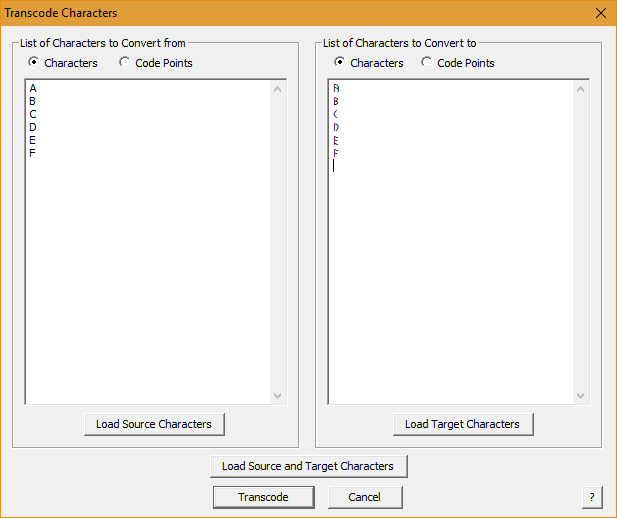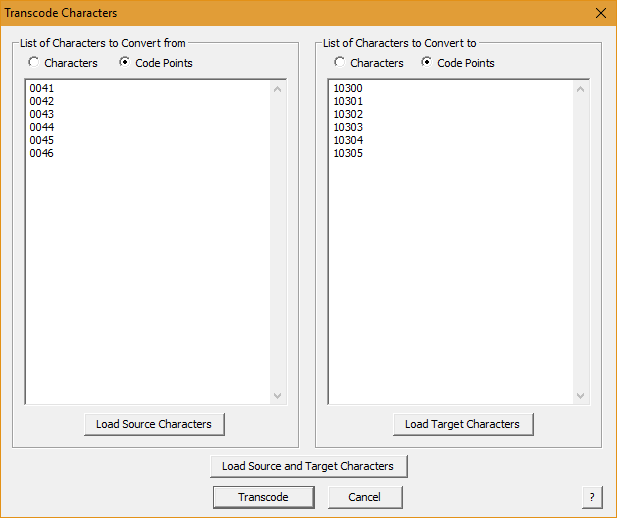
This box allows you to replace multiple source characters with multiple target characters in the current document. You may either specify characters as Unicode characters or as hexadecimal code points, as shown in the two examples below (you can also have characters on one side and code points on the other).


You may either manually type or paste the source or target characters into the edit box, or you may load the source and/or target characters from file.
To separately load the source or target characters from file, click on the Load Source Characters button or Load Target Characters button. The file should be UTF-8 encoded with each character on a new line. Each entry must consist of exactly one Unicode character (e.g. "X") or the hexadecimal scalar value of a single Unicode character (e.g. "0058"). If you want a source or target that is more than a single character (e.g. a grapheme cluster or a emoji zwj sequence) then you should use the Batch Replace function instead.
To load the source characters and target characters from a single file, click on the Load Source and Target Characters button. The file should be UTF-8 encoded with each pair of characters on a new line separated by a tab character.
There must be the same number of entries for the lists of source characters and target characters, although the target characters may include blank lines if the corresponding entry for the source character is to be replaced by nothing. The source characters may not include any blank lines.
All instances of each source character in the document will be replaced by the corresponding target character. The replacement is case sensitive. Note that the replacement is not chaining, so for example if you specify source characters "a", "b", "c" and corresponding target characters "b", "c", "d", then all instances of "a" will be converted to "b", all instances of "b" will be converted to "c", and all instances of "c" will be converted to "d", so the string "abc" will be converted to "bcd".